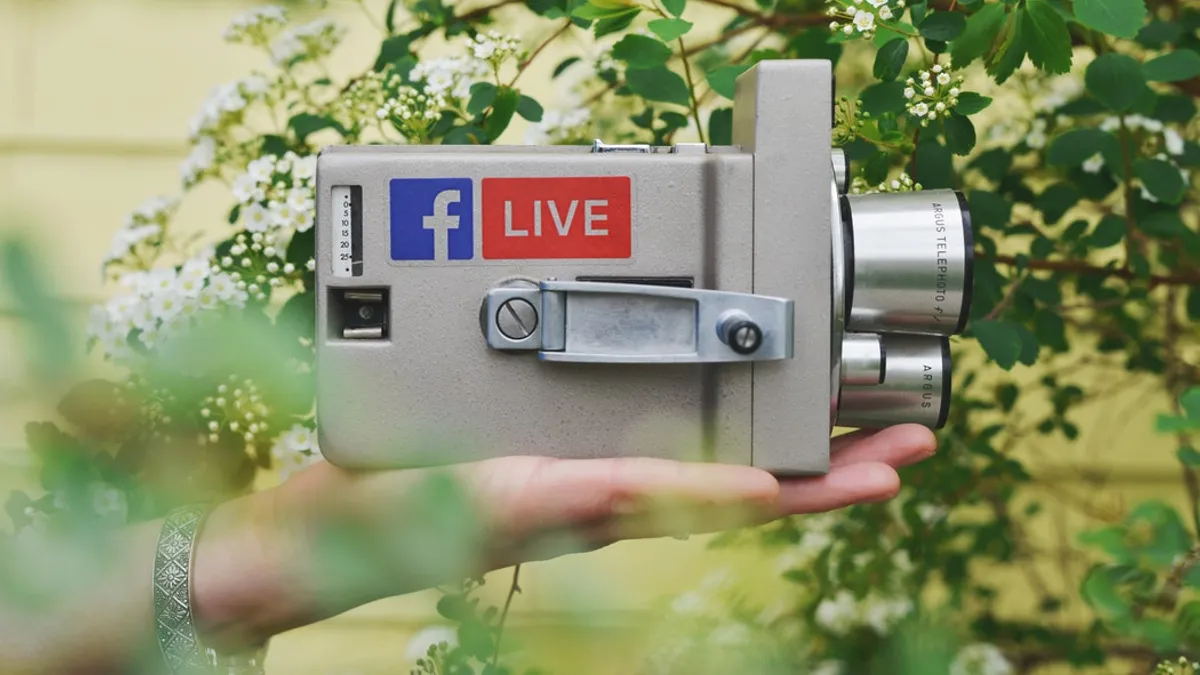Brief:
- Facebook Live, the social network's video-sharing service, is testing a feature for merchants to demonstrate and describe products for viewers to buy, it confirmed to TechCrunch. The social giant is testing the feature in Thailand, where it has piloted other features such as home rentals in its Marketplace section.
- Facebook users can take a screenshot of a product shown in the videos and use the Messenger chat app to send the image to the merchant. That seller can then request direct payment through Messenger to complete the transaction, from which Facebook doesn't currently take a cut of revenue.
- A community of independent sellers in Thailand have used Live to offer products such as cosmetics, handbags and clothing and demonstrate how they're worn or used. Facebook said it's currently not planning to add more sellers, but merchants can join a waitlist to potentially participate in the pilot.
Insight:
As QVC, the Home Shopping Network and other similar video-based selling platforms have demonstrated for years, live video demonstrations of products are an effective sales and marketing tool. Merchants can get immediate feedback from viewers who respond to a call to action with a direct purchase or with more questions about the products being demonstrated.
Facebook Live's test of video shopping features is a logical progression for the social network as it seeks to add more video content and expand its e-commerce features. Video content gives Facebook more opportunities to sell ad inserts to major brands worldwide. As the social network confronts slowing growth and booked ad space, the company is working to develop additional revenue streams in the social commerce space. By integrating the videos with Messenger, which has 1.3 billion users worldwide, Facebook can provide its own call-to-action and transaction mechanisms for viewers who are interested in shopping on the social platform.
However, video commerce is tricky, as it requires the right mix of on-air personality, production value and consumer interest in learning about products through video demonstrations. Amazon learned its lesson the hard way in trying to emulate QVC, which has had its own struggles with declining sales as more viewers cancel pay-TV services. Amazon in 2017 stopped streaming its "Style Code Live" show targeting millennials after just one year. QVC has tended to target middle-aged women, an audience that's been more amenable to video shopping. Whether that same audience will turn to Facebook's new feature for shopping remains to be seen.
Facebook's broader push into social commerce takes aim at online marketplaces like Craigslist, eBay and Etsy, which don't prominently feature video content. Social commerce is slowly gaining popularity, especially on Facebook and Facebook-owned Instagram. More than half of consumers (55%) have bought something through social media, an Avionos survey found. Its data show that 40% of consumers have made a purchase on Facebook, specifically, 13% on Instagram and 12% on Pinterest, highlighting how visual-based platforms are well-suited for shopping.














